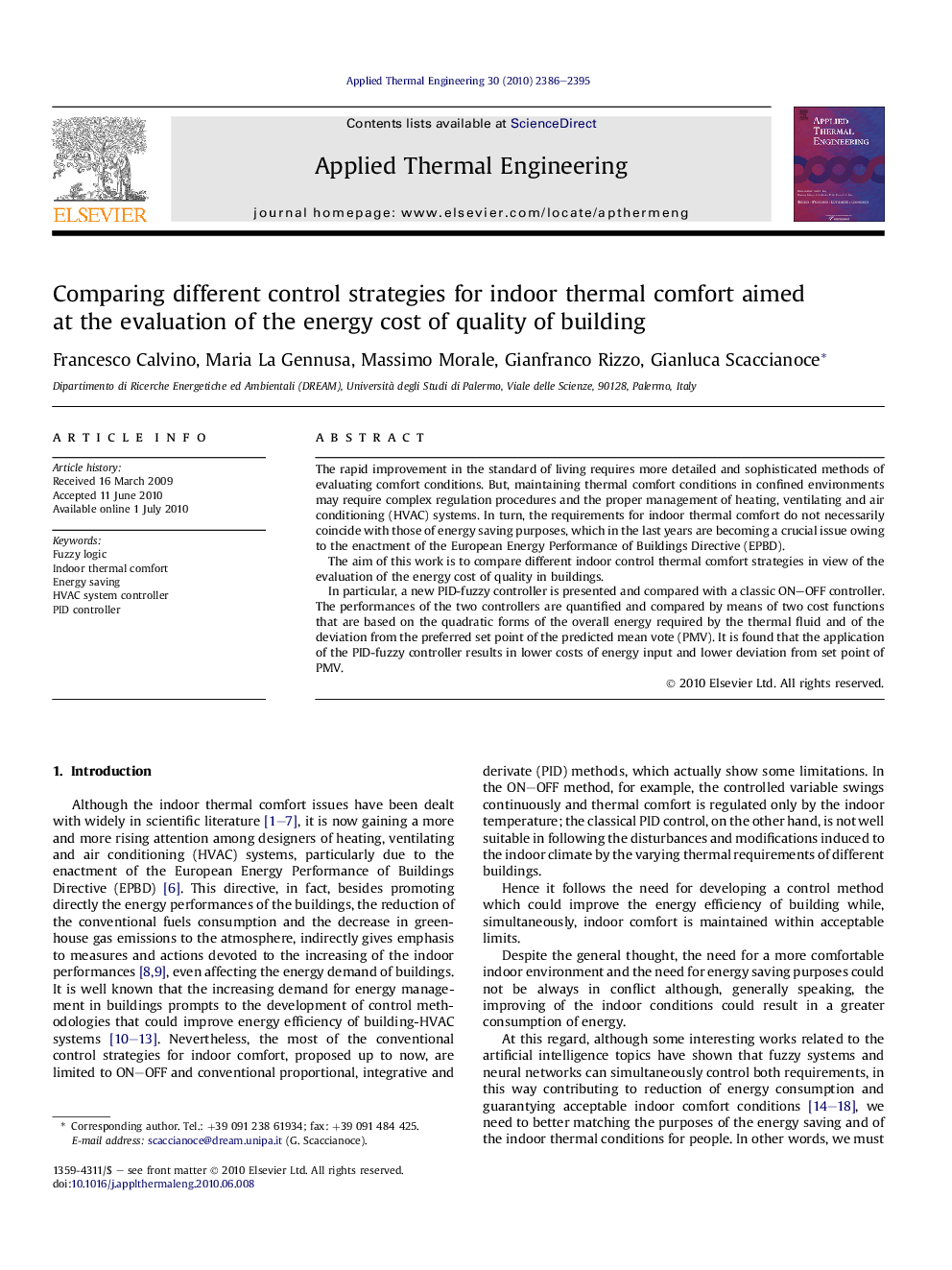| Article ID | Journal | Published Year | Pages | File Type |
|---|---|---|---|---|
| 648169 | Applied Thermal Engineering | 2010 | 10 Pages |
Abstract
The rapid improvement in the standard of living requires more detailed and sophisticated methods of evaluating comfort conditions. But, maintaining thermal comfort conditions in confined environments may require complex regulation procedures and the proper management of heating, ventilating and air conditioning (HVAC) systems. In turn, the requirements for indoor thermal comfort do not necessarily coincide with those of energy saving purposes, which in the last years are becoming a crucial issue owing to the enactment of the European Energy Performance of Buildings Directive (EPBD).
The aim of this work is to compare different indoor control thermal comfort strategies in view of the evaluation of the energy cost of quality in buildings.
In particular, a new PID-fuzzy controller is presented and compared with a classic ON–OFF controller. The performances of the two controllers are quantified and compared by means of two cost functions that are based on the quadratic forms of the overall energy required by the thermal fluid and of the deviation from the preferred set point of the predicted mean vote (PMV). It is found that the application of the PID-fuzzy controller results in lower costs of energy input and lower deviation from set point of PMV
Related Topics
Physical Sciences and Engineering
Chemical Engineering
Fluid Flow and Transfer Processes
Authors
Francesco Calvino, Maria La Gennusa, Massimo Morale, Gianfranco Rizzo, Gianluca Scaccianoce,
